- Home
- UFAI in the News
- UFAI Medical Publications
- Alternative Therapies For Plantar Fasciopathy
Alternative Therapies For Plantar Fasciopathy
- Published 10/25/2017
- Last Reviewed 10/25/2017

Although most patients can attain relief from heel pain through conservative means, some will require alternative treatments. These authors share their experience with plantar fasciopathy treatments such as radiofrequency microdebridement, platelet-rich plasma and cryopreserved human amniotic membrane.
Plantar fasciitis is one of the most common clinical conditions in the practice of medicine and represents 11 to 15 percent of all visits to podiatrists. Plantar fasciitis is responsible for about 1 million patient visits per year in the United States. Presenting as heel and arch pain that is particularly worse after a period of rest, plantar fasciitis frequently causes a search for diagnostic answers and treatment options. Plantar fasciitis is the term that clinicians commonly use to describe plantar heel pain but plantar fasciosis may more accurately reflect the condition when degenerative changes to the fascia are apparent in pathologists’ exams.
Understanding why patients develop plantar fasciitis individualizes treatment options and enhances clinical outcomes. Biomechanical etiologies such as foot structure, functional processes including tightness of the posterior muscle group, degenerative changes and overuse injuries are all factors that contribute to increased local stress at the plantar fascia insertion, and can provoke heel pain.
Response to a monitored trial of conservative therapy, in and of itself, helps confirm the diagnosis of plantar fasciitis. The vast majority of patients respond to a conservative treatment program with careful attention to details. Unfortunately, in some patients, symptoms persist and the difficult problem prompts additional reflection on diagnosis and a likely step up in therapy. For persistent problems, further analysis of the etiology may clarify the issues and highly specialized treatment options may be effective.
A Guide To Making An Accurate Diagnosis
Diagnosing plantar fasciitis usually relies on a history and physical examination that are often supplemented by radiographic assessment. The clinical presentation typically has patients relating pain with first steps in the morning or standing after a period of rest. The pain frequently improves with walking as patients perceive less pain while the fascia stretches with ambulation. When patients present with acute plantar fascia pain, often associated with intense exercise, one may suspect a tear of the plantar fascia. Plantar fasciitis is most commonly associated with pain in the area of the plantar fascia origin at the calcaneal tuberosity. Physicians can usually reproduce pain due to plantar fasciitis by palpating the medial plantar calcaneal tubercle and the proximal portion of the plantar fascia.
Standard radiographs. While plantar fasciitis is often a clinical diagnosis, diagnostic imaging commonly identifies the underlying source of pain and excludes other etiologies. Standard foot radiographs principally rule out fractures, bone cysts and bone tumors, and provide pertinent information on the presence of subcalcaneal or retrocalcaneal spurs. However, the presence of spurs does not always correlate with a plantar fasciitis diagnosis.
Diagnostic ultrasound. Diagnostic ultrasound is an effective and simple modality that physicians often use in the office to aid in the diagnosis of plantar fasciitis. In cases of plantar fasciitis, ultrasonography often reveals thickening of the fascia, hypoechoic changes and bony spur formation. A systematic review aimed at determining the correlation between the thickness of the plantar fascia and symptomology found that thickness above 4.0 mm was diagnostic of plantar fasciitis.8 However, it is important to note that many patients have symptoms when plantar fascia thickness is below 4.0 mm and asymptomatic patients in some cases demonstrated a thickness above 4.0 mm. Ultrasound may also pick up tears in the plantar fascia, soft masses, nerve compartment masses, stress fractures and calcaneal cysts. One may utilize additional diagnostic testing if there is a suspicion of some of these diagnostic possibilities.
Magnetic resonance imaging (MRI). An MRI is common adjunct to assist in the diagnosis of heel pain. Magnetic resonance imaging provides informative details that can aid in the diagnosis of a large spectrum of heel pathologies. The specificity of an MRI can allow for confirmation of a plantar fasciitis diagnosis in complex cases and also support the clinical suspicion of fascial injury, bone fracture, mass, cyst formation, or a space-occupying lesion causing nerve problems. The MRI findings one would see with plantar fasciitis may include plantar fascial thickening (greater than 3 mm as defined in a study by Rosenberg and colleagues), intrafascial and perifascial edema on T2-weighted images, and an increased intrafascial T1 signal. The thickening in plantar fasciitis is usually fusiform as opposed to focal and nodular, which is present in plantar fibromatosis.
A Closer Look At The Differential Diagnosis Of Heel Pain
Not all patients with plantar heel and arch pain have plantar fasciitis. Depending on the clinical circumstance, suspicion about neurogenic heel pain origin (i.e., nerve irritation or entrapment), tarsal tunnel syndrome, heel bursitis, stress fracture, plantar fascia tear, inflammation of growth plate (calcaneal apophysitis), and chronic pain syndrome may necessitate alternative management. Depending on the history and physical examination, plain radiographs, diagnostic ultrasound, MRI or electromyography may be appropriate.
Neurogenic causes. Chronic heel pain is related to entrapment of the first branch of the lateral planar nerve (also known as Baxter’s nerve) in 15 to 20 percent of recalcitrant cases.13 The second most frequent cause of neurogenic heel pain is lesions of the medial calcaneal nerve. A recent study evaluated the effectiveness of radiofrequency neuroablation treatment on chronic plantar heel pain unresponsive to physical therapy, steroid injections and/or extracorporeal shockwave therapy (ESWT). The authors concluded that radiofrequency ablation was an effective treatment (88 percent resolution) for chronic plantar heel pain.
Tarsal tunnel syndrome. The tarsal tunnel is a fibro-osseous space at the medial ankle, which is enclosed by the flexor retinaculum and protects the flexor tendons and neurovascular bundle that lies within. Tarsal tunnel syndrome refers to a compression or entrapment neuropathy of the tibial nerve and its branches that can mimic the heel pain one experiences with plantar fasciitis. The Tinel sign is an effective part of the physical exam in which light tapping over the tibial nerve can elicit a neurologic sensory defect such as tingling or paresthesia. On MRI, the nerves may be enlarged but there is often a lack of direct visualization. A MRI may be helpful to identify a space-occupying lesion in the tarsal tunnel (ganglion, nerve sheath tumor, other). High resolution MRIs are in development to further assist in nerve assessment.
Bursitis. It is important to recognize that there are two different bursas located in the heel: the retrocalcaneal bursa and the retro-Achilles bursa. Both bursae can become irritated, causing a bursitis. This may occur in conjunction with insertional Achilles tendinopathy and plantar fasciitis alone or concomitantly. On clinical exam, a bursa will be palpable more posteriorly than the plantar calcaneal tubercle and will have distinctive palpable protuberance or bursae. On MRI, retrocalcaneal bursitis can be visible as an enlarged fluid-filled mass with low signal intensity on T1-weighted imaging and high signal intensity on fluid-sensitive images.
Trauma. There are various traumatic causes of heel pain that include fracture, tendon tear or fascia tears. Clinically, a fracture will often demonstrate diffuse swelling of the heel region while one can palpate localized masses with gentle pressure. When the physical exam elicits pain with a medial and lateral calcaneal squeeze, one should suspect a fracture, cyst formation or nerve condition. Examination with a tuning fork may also provide additional clues leading to fracture diagnosis. Flexion of the toes against pressure can elicit pain with contraction of a torn muscle originating from the heel region. Ultimately, diagnostic imaging is often essential to provide further information about the underlying etiology of pain.
Calcaneal stress fractures. After the metatarsal bones, the calcaneus is the second most common site of stress fractures. Plain X-rays may show subtle vertical sclerosis but researchers have found that X-rays are negative in 24 percent of stress fractures. When considering advanced imaging, MRI has better sensitivity and can identify calcaneal stress fractures earlier than CT scan.
Sever’s disease. One of the most common causes of heel pain in children is Sever’s disease, also known as calcaneal apophysitis. The average age at presentation is 11 years old. Calcaneal apophysitis is caused by the application of increased stress to the growing apophysis (secondary ossification center). This is often due to a repetitive overuse injury. Most commonly, the diagnosis occurs clinically although imaging can rule out other causes of heel pain.
The Importance Of Ascertaining A Natural History Of The Condition
Understanding the natural history of plantar fasciitis enables one to develop a logical treatment program. At our institution, we have found that for patients with up to three months of symptoms, approximately 70 percent will respond to conservative therapy. Of those with symptoms of three to six months’ duration, 50 percent respond to first-line measures.
As the duration progresses, the likelihood of response to conservative therapy decreases and for those with six months to one year of symptoms, 40 percent are likely to respond to conservative interventions. For the unfortunate patient with over one year of symptoms, only a 30 percent chance of response to conservative therapy is likely. Patients who fail to progress should have periodic reevaluation to make sure that a mimicker of plantar fasciitis is not present or a concomitant problem has not developed.
Pertinent Insights On The Authors’ Conservative Treatment Protocol
At the University Foot and Ankle Institute, we see over 5,000 cases of plantar fasciitis a year. Approximately 80 percent of patients improve with rigid supportive shoes, functional orthotics and targeted physical therapy. For those who do not respond to first-line therapy, reevaluation includes a careful reflection on underlying diagnosis and thoughtful reappraisal of the details of current therapy. At this point, we again consider the differential diagnosis of mimicking conditions or those that are concomitant along with the plantar fasciitis contributing to continued symptoms. A further understanding of the details of how patients actually used the prior conservative measures often leads to identifying what is missing in the treatment that led to the continued symptoms. This review frequently offers the opportunity for correction with additional, fine-tuned conservative therapy.
At our institution, we offer a progression of therapeutic steps that form a sequence of therapy. Footwear selection is critical. Often, the primary recommendation is a more sophisticated shoe selection focusing on a type of shoe with a supportive sole. An orthotic device, whether it is a rigid over-the-counter option or a custom-molded device, often provides improvement in symptomology.
Better adherence to a personalized stretching program taught by physical therapists with a special interest in the foot and ankle, and strategic low-Dye taping are additional first-line modalities we use to treat our patients. We sometimes use a glucocorticoid injection to break the cycle and provide relief. Problems sometimes evolve and become recalcitrant to conservative therapy. In this clinical situation, we consider shockwave therapy, intense therapeutic ultrasound and advanced ultrasound-guided injection therapies. These advanced injection therapies are regenerative in nature and include platelet rich plasma and cryopreserved human amniotic membrane.
In highly select circumstances, surgery may be required. When surgical treatments are required, there is also a sequence of options which include percutaneous, minimally invasive or open procedures.
First-Line Therapies: What The Literature Reveals
Corticosteroid injection. Local corticosteroid injections have been in use for many years to help patients with plantar fasciitis. The hope was that corticosteroids might speed pain relief by powerful effects, reducing inflammation and inhibition of fibroblast formation. The lack of consistent clinical response and the further understanding of the underlying problem being a tendinopathy have led to a reappraisal of the practice.
Therapeutic targeted glucocorticoid injections for plantar fasciitis had specific evaluation in a current comprehensive Cochrane review of 39 studies involving 2,492 adults. Although heterogeneous in the duration of their pain, most patients had heel pain for several months. Although the individual trial comparisons varied, the authors concluded that only low-quality evidence was present that the injections may reduce heel pain for up to one month but not subsequently. Steroid injection made no difference in heel pain for the median term (one to six months’ follow-up). Although concerned about potential complications of glucocorticoid therapy, the review authors found reports of only two ruptures of plantar fascia, three injection site infections and 27 patients with less serious short-term adverse effects. Due to selective reporting of complications, the authors considered the quality of complication data to be very low quality.
In our practice, we use glucocorticoid injection therapy selectively, approximately 10 percent of the time, as bridge therapy until other more conservative measures provide relief.
Extracorporeal shockwave therapy. Shockwave therapy is a therapeutic option to stimulate the wound healing cascade in the plantar fascia. A recent study involving 60 patients with chronic plantar fasciitis explored the efficacy of ESWT and compared it to low-level laser therapy and therapeutic ultrasound.18 Patients receiving ESWT had a 65 percent improvement as noted on MRI or clinical response, which was comparable to low-level laser therapy (70.6 percent improvement), and more effective than therapeutic ultrasound (only 23.5 percent improvement). For this study, researchers assessed therapeutic ultrasound delivery at 2W/cm2 in five sessions a week for three consecutive weeks, utilizing a BTL 5,000 SWT Power combination device (BTL). Unfortunately, this and other studies on plantar fasciitis tend to be small and absent a placebo group.
By considering the timing of intervention with shockwave therapy, additional help may be available for patients. A recent study on ESWT for plantar fasciitis challenges the traditional treatment paradigm. Rather than waiting for chronic and recalcitrant problems to set in, this study examined subacute early stage plantar fasciitis and the response to shockwave therapy. In a group of 28 patients, 14 had early plantar fasciitis with symptoms less than three months in duration. Using a conservative intent to treat analysis, the authors found equally positive results (62 percent) in the early stage and late stage group who received ESWT. The authors conclude that early treatment with ESWT may allow clinical improvement and better outcome if one considers this therapy a little earlier in the sequence of therapies. At our institution, we utilize ESWT at low doses to avoid bruising the periosteum and bone.
Intense therapeutic ultrasound. Intense therapeutic ultrasound uses high frequency, high intensity ultrasound therapy to concentrate sound waves to produce selective changes in targeted areas, leaving the surrounding tissue intact. The theory is that localized focused energy on the tissue promotes collagen generation and reduces pain. Preliminary results of a 33-patient trial with intense therapeutic ultrasound (Actisound System, Guided Therapy Systems) suggest this technology may be helpful.21 This technology uses a special 3.2 MHz high intensity device that can deliver up to 10 kW/cm2. Patients received only two sessions at four weeks apart using 5 J at 350 to 1000 pulses. Further studies evaluating intense therapeutic ultrasound are underway.
Key Insights On Advanced Therapies For Chronic Cases
Platelet rich plasma (PRP). Platelet rich plasma is an extract that comes from a patient’s own blood, which contains many factors (growth factors, cytokines and others) that initiate continued healing. Several studies demonstrate a favorable effect on cell microscopic steps in the tissue healing process. Interestingly, in a U.S. claims data study of 6 million patients, plantar fasciitis was the fifth most common indication for all musculoskeletal uses of PRP by providers of all specialties.
In a prospective, randomized study involving 40 patients with chronic plantar fasciitis who did not respond to conservative therapy for four months, PRP was significantly superior to glucocorticoid injection. Specifically, when researchers used ultrasound-guided injection for 3 mL of PRP or 40 mg Depo-Medrol, PRP was superior at a clinically significant level, according to American Orthopaedic Foot and Ankle Society (AOFAS) hindfoot scores at three, six, 12 and 24 months following injection. Although the authors noted temporary symptomatic improvement with glucocorticoids, they thought the steroid was unlikely to improve long-term clinical results and identified significantly superior results with PRP at all intervals they examined.
A recent major systematic review of PRP in managing plantar fasciitis examined 12 high-quality articles focusing on 455 patients. Preparation and injection technique varied, but are crucial to the finding that PRP is superior to glucocorticoids in all the high-quality studies the researchers examined. Key details of the best studies varied and blood collection ranged from 10 to 52 mL. The injected volume ranged from 2 to 5 mL. Some authors directly inject the PRP while others use a “peppering” technique with one cutaneous injection and several passes into the plantar fascia. Most patients had some pain relief at three months but the response continued to occur for as long as 12 months after injection. The authors thought the onset of action of PRP was related to the amount of underlying tissue degeneration present with greater degrees of tissue degeneration taking longer to resolve. No complication of PRP injection occurred. A single injection of PRP decreased pain and improved function greater than glucocorticoids.
In a literature review of novel and conservative approaches toward effective management of plantar fasciitis, eight randomized controlled trials met quality review criteria. The review considered ESWT, botulinum toxin A (Botox, Allergan) administration, corticosteroid injections, autologous whole blood and plasma treatment, cryopreserved human amniotic membrane and PRP, physiotherapy, and strength training. While all of these therapies lead to decreased pain scores, for long-term management, autologous plasma and PRP were the preferred treatment options. Physiotherapy and strength training were equivalent to corticosteroids, and researchers thought these modalities to be suited to patients wishing to avoid other therapies.
In our practice, approximately 70 percent of patients recalcitrant to first-line plantar fasciitis treatment improve with PRP therapy. We administer a series of two ultrasound-guided injections at one month apart. We usually have the patient rest the area in a boot for two weeks after PRP injections. The patient gets instructions on local massage and avoiding cold therapy to the area. A gradual return to activity can resume two weeks post-injection. It is important to set realistic goals of therapy as the response to PRP therapy often takes about three months.
Cryopreserved human amniotic membrane. Human fetal tissue is well known to have many chemicals including growth factors, cytokines and others that promote healing when one injects them into adult tissue. The hope of tissue regeneration with limited inflammation has prompted the use of this tissue for chronic wounds since the early 20th-century. With advanced tissue preparation techniques showing very promising albeit early (or anecdotal) results with PRP, hope for a new therapy for plantar fasciitis has emerged. A pilot prospective randomized trial involving 23 patients explored the safety of a cryopreserved human amniotic membrane injection and its equivalence to glucocorticiocoids. Cryopreserved human amniotic membrane was safe and had comparable efficacy to glucocorticoids.
An ongoing multicenter prospective study is comparing ultrasound-directed injection doses of 25, 50 or 100 mg of cryopreserved human amniotic membrane either as a single injection or series of two injections. The results of this preliminary study are encouraging as all treatment groups showed statistically improved foot pain at 18 weeks. The 100 mg cryopreserved human amniotic membrane dose for both a single injection and two injections revealed the most significant reduction in foot pain. This interim data presented at the 2016 American College of Foot and Ankle Surgeons (ACFAS) meeting suggests the cryopreserved human amniotic membrane treatment modality may be safe and effective.
Recently, a study on cryopreserved human amniotic membrane utilization for chronic plantar fasciitis and Achilles tendinosis reported significant results. The plantar fasciitis and Achilles tendinosis patients in the study were resistant to standard therapy protocols and after a single cryopreserved human amniotic membrane injection (0.5 mL) and placement into a supportive sneaker, all 44 patients showed improvement in pain without any adverse reactions. Pain scores were markedly reduced by postoperative week 10.
At our institution, we offer cryopreserved human amniotic membrane as a second-line therapy in cases of chronic plantar fasciitis after initial conservative modalities failed to provide adequate relief of symptoms. Often, a single ultrasound-guided injection will provide relief. When a second injection is necessary, we typically perform it one to three months after the initial injection. Just as in the post-PRP recovery, the patient rests in a boot for two weeks after injection, gets instruction on local massage and avoids cold therapy to the area. A gradual return to activity can resume two weeks post-injection.
When Patients With Plantar Fasciitis Need Surgical Solutions
While conservative or injection therapy is effective in the vast majority of circumstances for plantar fasciitis, occasionally, surgical therapy is necessary. Depending upon patient-specific factors, one may consider various surgical procedures.
Minimally invasive surgical debridement and microfasciotomy. Percutaneous radiofrequency microdebridement (Topaz procedure, Smith and Nephew), or percutaneous ultrasonic microdebridement (Tenex procedure, Tenex Health) are minimally invasive procedures that have shown success in the management of plantar fasciitis. At our institution, we perform the Topaz or Tenex procedure after failed first-line therapies and in cases of plantar fasciitis that are recalcitrant to advanced human tissue therapies. For patients who decline advance human tissue therapy, we consider the minimally invasive surgical procedures.
Topaz. Percutaneous radiofrequency microdebridement (Topaz procedure) is a minimally invasive procedure surgeons perform in the operating room. Surgeons make small holes on the plantar heel to break up plantar facial scar tissue and vascularize the diseased fascia. The concept is to convert a chronic degenerative process into an acute inflammatory response to promote inflammatory healing cells directly into the fascia. The patient wears a walking boot for two to three weeks during the post-procedure healing process. A prospective 10-patient study utilizing the percutaneous microtenotomy procedure (using Topaz microdebrider) demonstrated promising results.
Tenex. Percutaneous ultrasonic microdebridement (Tenex procedure) can occur in the office with local anesthetic or at a surgical center with the patient under mild sedation. Employing ultrasound, the physician is able to locate pathologic scar tissue and with the Tenex device, he or she can perform precise microscopic cutting to remove some diseased tissue. Recovery is typically one to two weeks with light weightbearing exercise within two weeks. In a prospective study of 12 patients with chronic plantar fasciosis who failed conservative measures, an ultrasound-guided plantar fasciotomy with percutaneous instrumentation proved to be safe, effective and well tolerated with improvements in AOFAS hindfoot scores by six months, and sustained at 12 months post-procedure.
What You Should Know About Endoscopic And Open Surgical Procedures
When all therapies for plantar fasciitis fail, one can perform the release of the plantar fascia, either endoscopic or open. A study by a group of expert foot and ankle surgeons aimed to determine the current preferred nonsurgical and surgical treatment modalities for recalcitrant plantar fasciitis.33 Regarding the preferred surgical treatment, gastrocnemius resection, alone or in combination, was the most prevalent (27 percent of respondents). The second most common surgical intervention was open partial plantar fascia release with nerve decompression (21 percent of respondents).
At our institution, when no concomitant nerve entrapment is present, we most commonly take an endoscopic approach to release the plantar fascia. Patients typically have three weeks of recovery time in a boot.
A Few Pearls From The Authors’ Experience
An important principle in management is excluding pathologic processes that mimic plantar fasciitis or are present concomitantly. Conservative therapy, often with a detailed focused history assessment and targeted intervention, is usually successful in about 70 percent of patients in our experience. Intense therapeutic ultrasound is a promising therapy and may emerge to be a helpful noninvasive treatment option. We find PRP or cryopreserved human amniotic membrane help the remainder of patients with only a very small portion of patients ultimately requiring surgery. While we discuss both human tissue options with patients, we tend to encourage PRP use for patients suffering with the most severe symptoms. Proper footwear, stretching and orthotics remain as independent and concurrent long-term therapies for patients who do receive any advanced therapy.
We see approximately 5,000 patients a year with plantar fasciitis and of those, approximately 4,000 respond to very well to footwear, orthotics and physical therapy. Of the 1,000 remaining patients, most then receive a steroid injection, resulting in improvement in about half. We then offer these last 500 patients a combination of therapies including PRP, cryopreserved human amniotic membrane, ESWT or intense therapeutic ultrasound in a clinical trial.
We explain to patients that PRP causes a large inflammatory reaction of the plantar fascia and many trials have shown the modality to be the superior next step with the best long-term results. Unfortunately, insurance companies do not often cover PRP and it requires an out of pocket payment.
We let patients know that cryopreserved human amniotic membrane injections cause a more controlled inflammatory reaction of the plantar fascia and several studies have shown it to be a very helpful alternative next step.
We also offer ESWT, which has the advantage of requiring no injection, and is a mild continuation of conservative therapy usually requiring four to five treatments. At the University Foot and Ankle Institute, we utilize a lower dose of ESWT to minimize bone contusion.
Intense therapeutic ultrasound is undergoing investigation as a high frequency, high intensity ultrasound treatment for plantar fasciitis. Preliminary intense therapeutic ultrasound results appear favorable.
Of our original cohort of 5,000 patients, approximately 150 will have gone through the aforementioned conservative, biologic and external energy applications that, unfortunately, are not successful. In this situation, we offer the Tenex or Topaz procedure. The Topaz procedure has greater debridement potential and a greater chance of success in our experience. More patients in our practice end up treated with the minimally invasive Topaz procedure than the Tenex procedure. Ultimately, a small number, perhaps 30 patients, undergo formal surgery of the plantar fascia via an arthroscopic fasciotomy. We reserve this surgery for cases of severe planta fascia scaring. Mimickers of plantar fasciitis or coexisting problems require separate and distinct therapies.
In Conclusion
For those patients with plantar fasciitis that is refractory to first-line therapies, additional effective therapies exist today and others are in the midst of development. This is a rapidly evolving field and the future is bright for helping patients with plantar fasciitis.
Dr. Baravarian is an Assistant Clinical Professor at the UCLA School of Medicine and the Director and Fellowship Director of the University Foot and Ankle Institute in Los Angeles (www.footankleinstitute.com ).
Dr. Heigh is an Advanced Fellow at the University Foot and Ankle Institute in Los Angeles.
References
1. Rompe JD, Furia J, Weil L, Maffulli N. Shock wave therapy for chronic plantar fasciopathy. Br Med Bull. 2007; 81-82:183–208.
2. Riddle DL, Schappert SM. Volume of ambulatory care visits and patterns of care for patients diagnosed with plantar fasciitis: a national study of medical doctors. Foot Ankle Int. 2004; 25(5):303–10.
3. Thomas JL, Christensen JC, Kravitz SR, et al. The diagnosis and treatment of heel pain: a clinical practice guideline-revision 2010. J Foot Ankle Surg. 2010; 49(3Suppl):S1–S19.
4. Petraglia F, Ramazzina I, Costantino C. Plantar fasciitis in athletes: diagnostic and treatment strategies. A systematic review. Muscle Ligament Tendon J. 2017; 7(1):107-118.
5. Arslan A, Koca TT, Utkan A, Sevimli R, Akel I. Treatment of chronic plantar heel pain with radiofrequency neural ablation of the first branch of the lateral plantar nerve and medial calcaneal nerve branches. J Foot Ankle Surg. 2016; 55(4):767-771.
6. Goff JD, Crawford R. Diagnosis and treatment of plantar fasciitis. Am Fam Physician. 2011; 84(6):676-682.
7. Broholm R, Pingel J, Simonsen L, Bülow J, Johannsen F. Applicability of contrast‐enhanced ultrasound in the diagnosis of plantar fasciitis. Scand J Med Sci Sport. 2017; epub Feb. 27.
8. McMillan AM, Landorf KB, Barrett JT, Menz HB, Bird AR. Diagnostic imaging for chronic plantar heel pain: a systematic review and meta-analysis. J Foot Ankle Res. 2009;2:32.
9. Lawrence DA, Rolen MF, Morshed KA, Moukaddam H. MRI of heel pain. AJR Am J Roentgen. 2014; 200(4):845-855.
10. Grasel RP, Schweitzer ME, Kovalovich AM, et al. MR imaging of plantar fasciitis: edema, tears, and occult marrow abnormalities correlated with outcome. AJR Am J Roentgen. 1999; 173(3):699-701.
11. Rosenberg ZS, Beltran J, Bencardino JT. From the RSNA refresher courses: MR imaging of the ankle and foot. RadioGraphics. 2000; 20(spec no):S153–S179.
12. David JA, Sankarapandian V, Christopher PRH, Chatterjee A, Macaden AS. Injected corticosteroids for treating plantar heel pain in adults. Cochrane Database Syst Rev. 2017; 6:CD009348.
13. Baxter DE, Pfeffer GB, Thigpen M. Chronic heel pain: treatment rationale. Orthop Clin North Am. 1989; 20(4):563–569.
14. Alshami AM, Souvlis T, Coppieters MW. A review of plantar heel pain of neural origin: differential diagnosis and management. Man Ther. 2008; 13(2):103–111.
15. Chang C, Wu J. MR imaging findings in heel pain. Magn Reson Imaging Clin N Am. 2017; 25(1):79–93.
16. Gwynne-Jones DP, Sims M, Handcock D. Epidemiology and outcomes of acute Achilles tendon rupture with operative or nonoperative treatment using an identical functional bracing protocol. Foot Ankle Int. 2011; 32(4):337–43.
17. McMillan AM, Landorf KB, Gilheany MF, Bird AR, Morrow AD, Menz HB. Ultrasound guided injection of dexamethasone versus placebo for treatment of plantar fasciitis: protocol for a randomised controlled trial. J Foot Ankle Res. 2010; 3:15.
18. Ulusoy A, Cerrahoglu L, Orguc S. Magnetic resonance imaging and clinical outcomes of laser therapy, ultrasound therapy, and extracorporeal shock wave therapy for treatment of plantar fasciitis: a randomized controlled trial. J Foot Ankle Surg. 2017; 56(4):762-767.
19. Saxena A, Hong BK, Yun AS, Maffulli N, Gerdesmeyer L. Treatment of plantar fasciitis with radial soundwave “early” is better than after 6 months: a pilot study. J Foot Ankle Surg. 2017; 56(5):950-953.
20. Molloy T, Wang Y, Murrell GA. The roles of growth factors in tendon and ligament healing. Sports Medicine. 2003; 33(5):381-394.
21. Baravarian B. Intense therapeutic ultrasound for chronic plantar fasciitis musculoskeletal pain reduction. Clinicaltrials.gov, 2017. Unpublished data. ID#20160753.
22. Wasterlain AS, Braun HJ, Harris AH, Kim HJ, Dragoo JL. The systemic effects of platelet-rich plasma injection. Am J Sports Med. 2013;41(1):186–193
23. Zhang JY, Fabricant PD, Ishmael CR, Wang JC, Petrigliano FA, Jones KJ. Utilization of platelet-rich plasma for musculoskeletal injuries: an analysis of current treatment trends in the United States. Orthop J Sports Med. 2016; 4(12): 2325967116676241.
24. Monto RR. Platelet rich plasma efficacy versus corticosteroid injection treatment for chronic severe plantar fasciitis. Foot Ankle Int. 2014; 35(4):313–8.
25. Chiew SK, Ramasamy TS, Amini F. Effectiveness and relevant factors of platelet-rich plasma treatment in managing plantar fasciitis: A systematic review. J Res Med Sci. 2016; 21:38.
26. Assad S, Ahmad A, Kiani I, et al. Novel and conservative approaches towards effective management of plantar fasciitis. Cureus. 2016; 8(12):e913.
27. Davis JW. Skin transplantation with a review of 550 cases at the Johns Hopkins Hospital. Johns Hopkins Med J. 1910; 15:307.
28. Hanselman AE, Tidwell JE, Santrock RD. Cryopreserved human amniotic membrane injection for plantar fasciitis: a randomized, controlled, double blind pilot study. Foot Ankle Int. 2015; 36(2):151-158.
29. Scott RT, Garras DN. Plantar fasciitis treatment with particulated human amniotic membrane. Presented at American Orthopaedics Foot and Ankle Society Annual Meeting, 2016.
30. Werber B. Amniotic tissues for the treatment of chronic plantar fasciosis and Achilles tendinosis. J Sports Med. 2015; 2015:219896.
31. Weil Jr L, Glover JP, Weil Sr LS. A new minimally invasive technique for treating plantar fasciosis using bipolar radiofrequency: a prospective analysis. Foot Ankle Spec. 2008; 1(1):13-18.
32. Patel MM. A novel treatment for refractory plantar fasciitis. Am J Orthoped. 2015; 44(3):107-110.
33. DiGiovanni BF, Moore AM, Zlotnicki JP, Pinney SJ. Preferred management of recalcitrant plantar fasciitis among orthopaedic foot and ankle surgeons. Foot Ankle Int. 2012; 33(6):507-512.
 I am a retired R.N. Have suffered painful problems for many years .always treated successfully by my Podiatrist, Dr Gary ...Patricia M.
I am a retired R.N. Have suffered painful problems for many years .always treated successfully by my Podiatrist, Dr Gary ...Patricia M. I have been going to the PT department for the last few weeks and the results have been amazing. I have been dealing with inser...Alex M.
I have been going to the PT department for the last few weeks and the results have been amazing. I have been dealing with inser...Alex M. I liked it.Liisa L.
I liked it.Liisa L. I depend on the doctors at UFAI to provide cutting edge treatments. Twice, I have traveled from Tucson, Arizona to get the car...Jean S.
I depend on the doctors at UFAI to provide cutting edge treatments. Twice, I have traveled from Tucson, Arizona to get the car...Jean S. Friendly staff that makes every effort to ensure you get the best care. They are clear in communicating with you about your con...Tanya L.
Friendly staff that makes every effort to ensure you get the best care. They are clear in communicating with you about your con...Tanya L. They helped me in an emergency situation. Will go in for consultation with a Dr H????
They helped me in an emergency situation. Will go in for consultation with a Dr H????
Re foot durgeryYvonne S. It went very smoothly.Maria S.
It went very smoothly.Maria S. My experience at the clinic was wonderful. Everybody was super nice and basically on time. Love Dr. Bavarian and also love the ...Lynn B.
My experience at the clinic was wonderful. Everybody was super nice and basically on time. Love Dr. Bavarian and also love the ...Lynn B. I fill I got the best service there is thank youJames G.
I fill I got the best service there is thank youJames G. My experience with your practice far exceeded any of my expectations! The staff was always friendly, positive and informative. ...Christy M.
My experience with your practice far exceeded any of my expectations! The staff was always friendly, positive and informative. ...Christy M. Love Dr. Johnson.Emily C.
Love Dr. Johnson.Emily C. I am a new patient and felt very comfortable from the moment I arrived to the end of my visit/appointment.Timothy L.
I am a new patient and felt very comfortable from the moment I arrived to the end of my visit/appointment.Timothy L.
-
 Listen Now
Is Bunion Surgery Covered By Insurance?
Read More
Listen Now
Is Bunion Surgery Covered By Insurance?
Read More
-
 Listen Now
What Are Shin Splints?
Read More
Listen Now
What Are Shin Splints?
Read More
-
 Listen Now
15 Summer Foot Care Tips to Put Your Best Feet Forward
Read More
Listen Now
15 Summer Foot Care Tips to Put Your Best Feet Forward
Read More
-
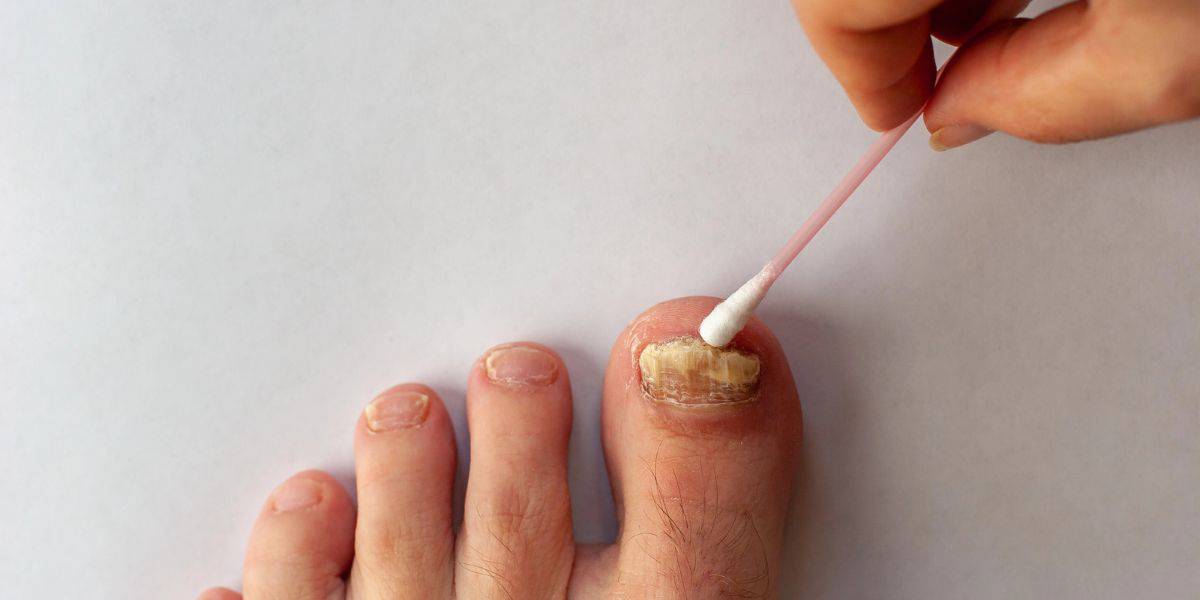 Listen Now
What To Do When Your Toenail Is Falling Off
Read More
Listen Now
What To Do When Your Toenail Is Falling Off
Read More
-
 Listen Now
Bunion Surgery for Athletes: Can We Make It Less Disruptive?
Read More
Listen Now
Bunion Surgery for Athletes: Can We Make It Less Disruptive?
Read More
-
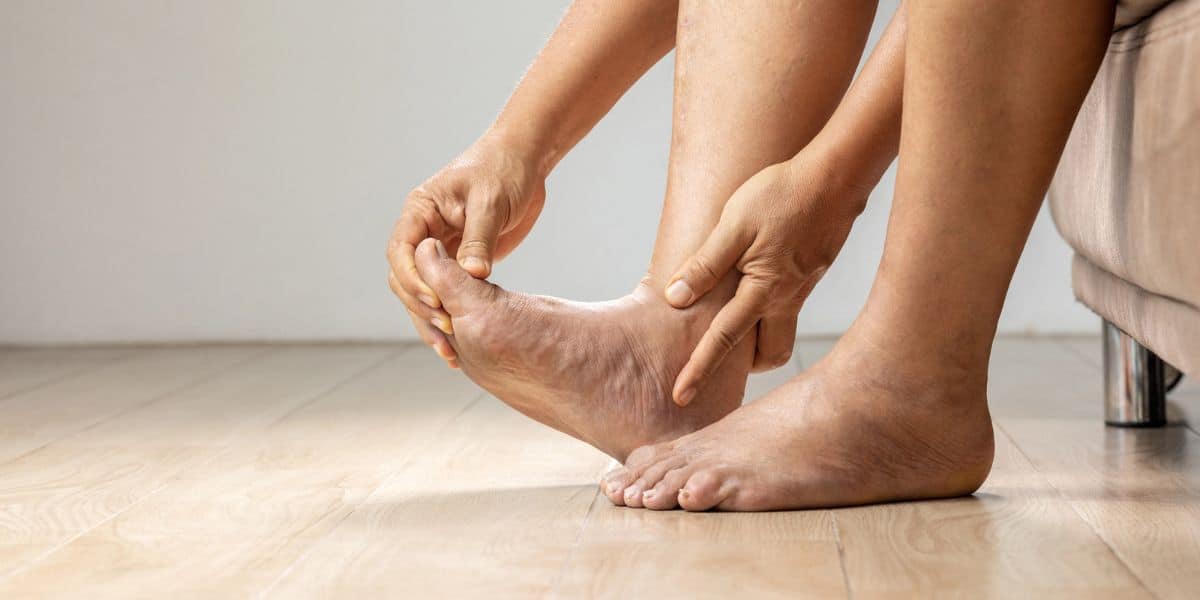 Listen Now
Top 10 Non-Surgical Treatments for Morton's Neuroma
Read More
Listen Now
Top 10 Non-Surgical Treatments for Morton's Neuroma
Read More
-
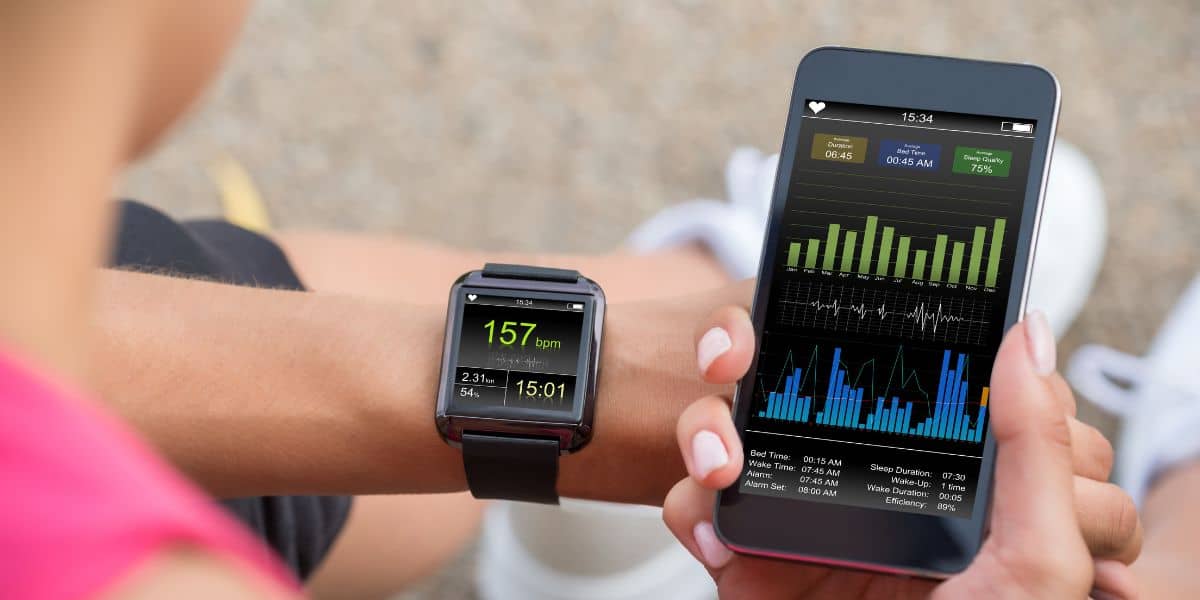 Listen Now
How Many Steps Do I Need A Day?
Read More
Listen Now
How Many Steps Do I Need A Day?
Read More
-
 Listen Now
Should I See a Podiatrist or Orthopedist for Foot Pain and Ankle Problems?
Read More
Listen Now
Should I See a Podiatrist or Orthopedist for Foot Pain and Ankle Problems?
Read More
-
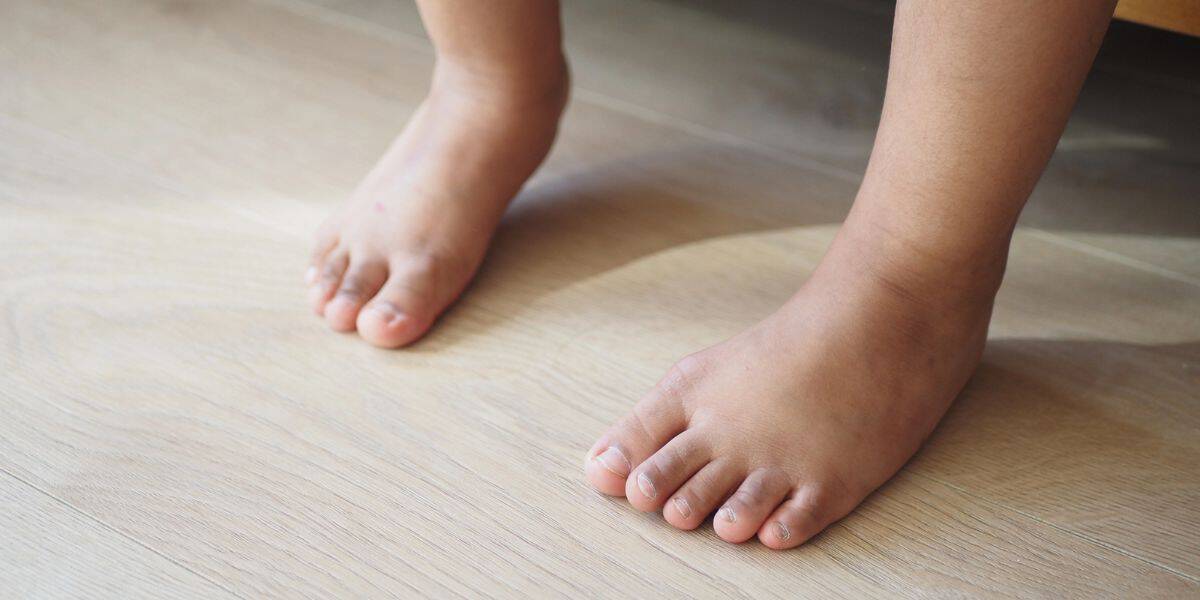 Listen Now
Pediatric Bunion Surgery
Read More
Listen Now
Pediatric Bunion Surgery
Read More
-
 Listen Now
Bunion Surgery for Seniors: What You Need to Know
Read More
Listen Now
Bunion Surgery for Seniors: What You Need to Know
Read More
-
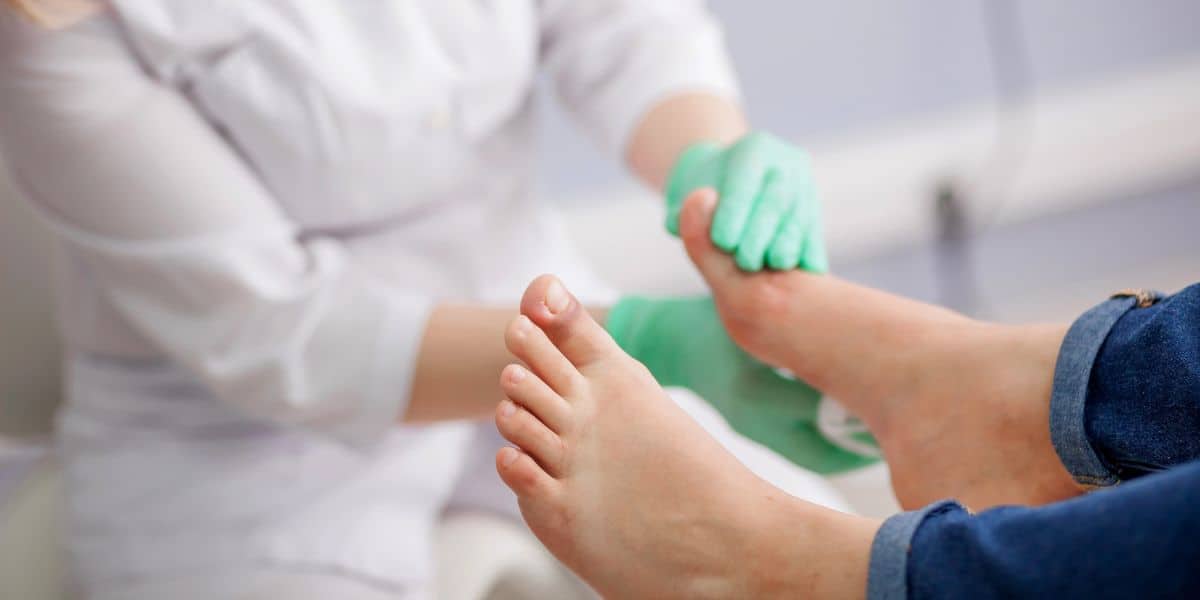 Listen Now
Non-Surgical Treatment for Plantar Fasciitis – What Are Your Options?
Read More
Listen Now
Non-Surgical Treatment for Plantar Fasciitis – What Are Your Options?
Read More
-
 Listen Now
Swollen Feet During Pregnancy
Read More
Listen Now
Swollen Feet During Pregnancy
Read More
-
 Listen Now
How To Tell If You Have Wide Feet
Read More
Listen Now
How To Tell If You Have Wide Feet
Read More
-
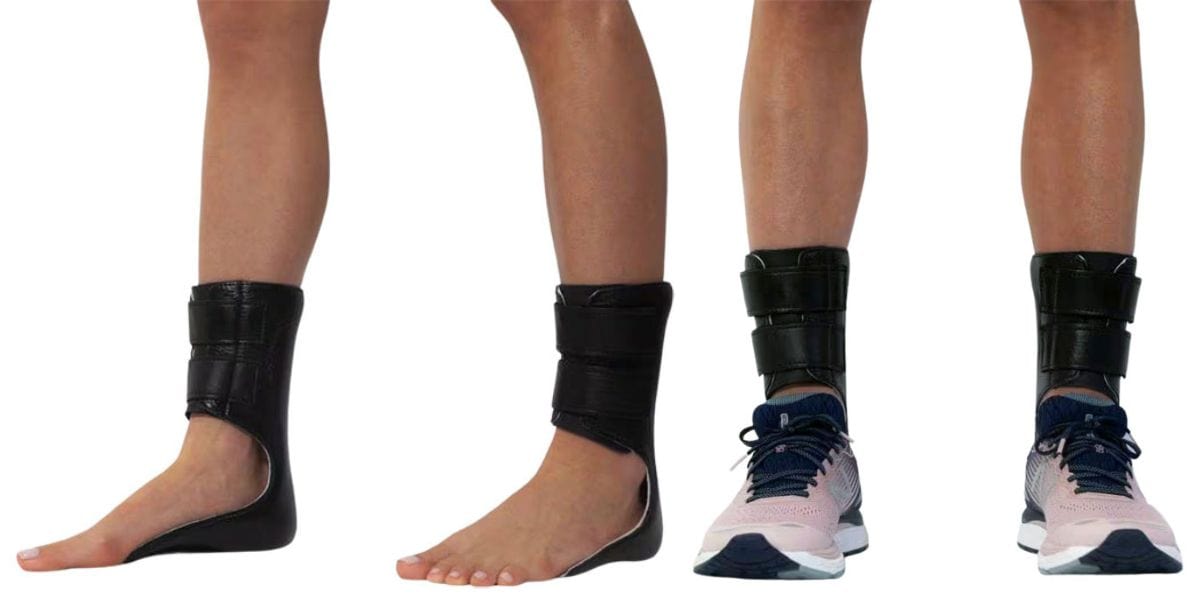 Listen Now
Moore Balance Brace: Enhance Stability and Prevent Falls for Better Mobility
Read More
Listen Now
Moore Balance Brace: Enhance Stability and Prevent Falls for Better Mobility
Read More
-
 Listen Now
Do Blood Pressure Medicines Cause Foot Pain?
Read More
Listen Now
Do Blood Pressure Medicines Cause Foot Pain?
Read More














